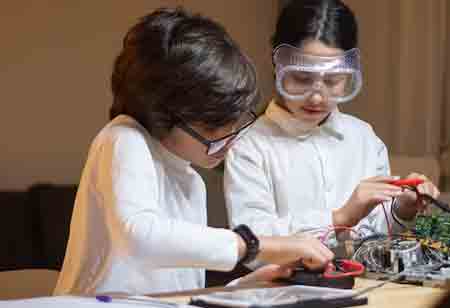THANK YOU FOR SUBSCRIBING
Be first to read the latest tech news, Industry Leader's Insights, and CIO interviews of medium and large enterprises exclusively from Education Technology Insights
Transforming Learning: Innovative Approaches to STEM
STEM education innovations like integration through technology, project-based learning, and accessibility change the face of education and inspire future leaders who will face the challenges.

By
Education Technology Insights | Wednesday, June 25, 2025
Stay ahead of the industry with exclusive feature stories on the top companies, expert insights and the latest news delivered straight to your inbox. Subscribe today.
Fremont, CA: STEM education has undergone tremendous transformations, making learning more engaging and relevant. STEM education advancements have provided students with crucial abilities for a technology world. These include incorporating sophisticated technology into classrooms, encouraging hands-on learning, and changing students' perceptions and interactions with STEM disciplines.
In a STEM classroom, integrating technology has dramatically improved access and engagement with complex concepts in a friendly manner. Digital tools, virtual labs, simulations, and other interactive software enable students to conduct experiments in virtual labs with enhanced understanding, encouraging creativity and experimentation, core components of the scientific method.
Integrating coding into the curriculum and robotics in learning environments has affected how problem-solving is approached in schools. Educational institutions introduce coding skills at a very tender age, giving the students programming languages through games and active play. This exposure de-mystifies technology and enriches critical thinking and the power to analyze different situations. Robotics clubs and competitions enhance learning by applying knowledge to real-life challenges.
Project-based learning (PBL) is also an innovative approach that is increasingly gaining momentum in STEM-based education. PBL encourages students to focus on real-world problems while working together to find solutions for such issues. Not only do students grasp the concepts of the sciences, technology, engineering, and mathematics, but this method is said to nurture soft skills like communication tea, teamwork, and time management. For instance, it can be done by a team of students who are required to develop sustainable energy solutions for their community and integrate learnings from different STEM disciplines, all connected to a real-world problem relevant to them. The authentic hands-on nature of PBL keeps students motivated and involved in learning. Education then becomes more exciting and meaningful.
Interdisciplinary learning is opening new horizons in STEM education. Nowadays, educators have come to appreciate that the distinction between disciplines is artificial and that real-world problems are multifaceted. Still, much must be done to integrate STEM with the arts, humanities, and social sciences to allow multidimensional education. This will encourage students to be creative and prepare them for more complex modern careers requiring collaboration across fields.
Online learning platforms and related resources have opened access to STEM education, breaking down barriers of geography and socioeconomic background in the process. Through high-quality content, online courses, and virtual interaction between students across any part of the world, democratization leads to a broad representation of voices and perspectives that will be involved in the learning process, thus making discussions richer while nurturing global citizenship.







